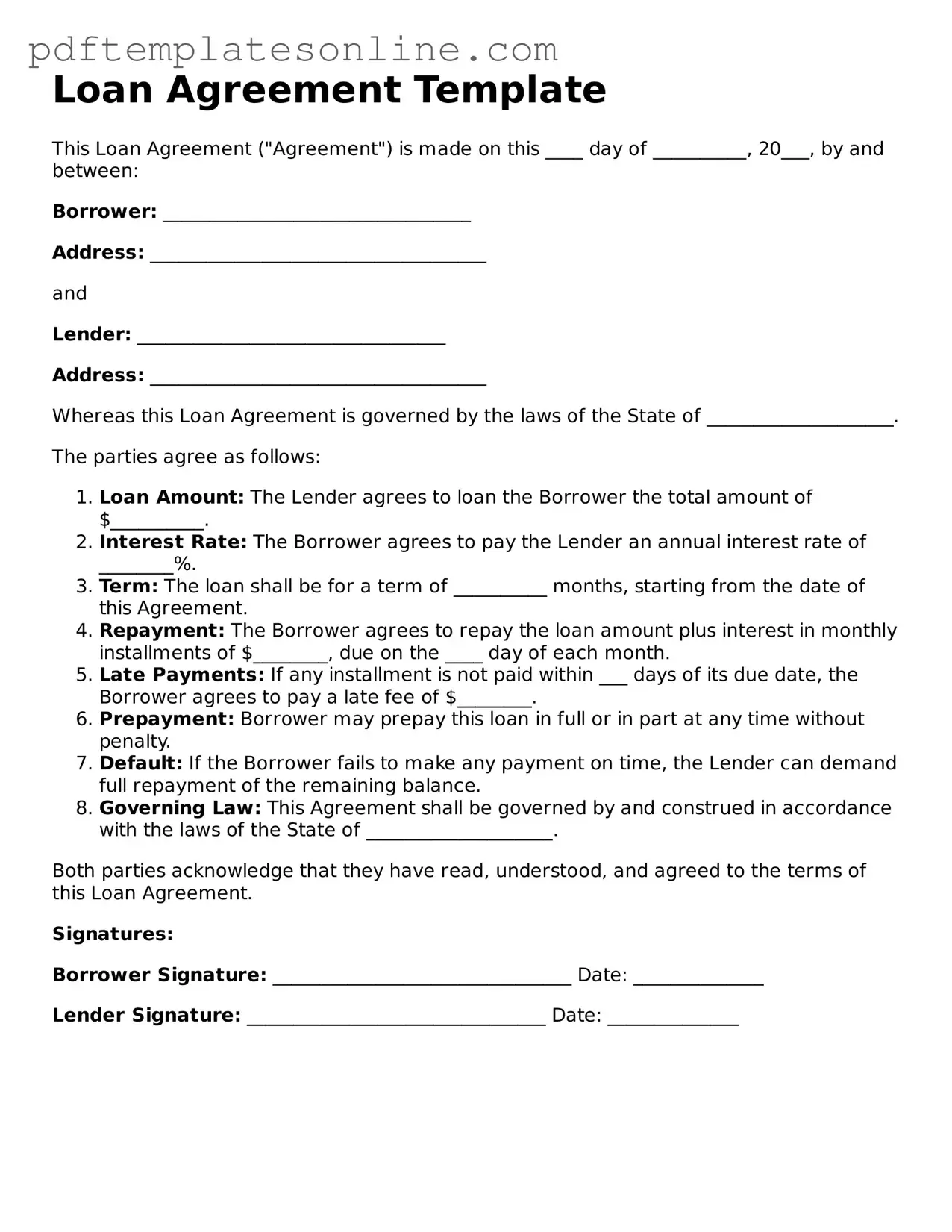When filling out a Loan Agreement form, accuracy is crucial. One common mistake is providing incorrect personal information. This includes errors in names, addresses, or Social Security numbers. Such inaccuracies can lead to delays in processing the loan or even disqualification.
Another frequent error involves misunderstanding the loan terms. Borrowers sometimes overlook the interest rate or repayment schedule. This oversight can result in unexpected financial burdens later on. It is essential to read the terms carefully before signing.
Some individuals fail to disclose all sources of income. Lenders need a complete picture of a borrower’s financial situation. Omitting income can raise red flags and may lead to a denial of the loan application.
Additionally, applicants often underestimate their expenses. When filling out the form, it is vital to account for all monthly obligations. Ignoring expenses can create an unrealistic view of financial capability, affecting loan approval.
Another mistake is not providing required documentation. Many borrowers forget to include necessary documents such as pay stubs or tax returns. Missing documentation can slow down the approval process or result in outright denial.
Some people may rush through the application process. Taking time to review each section is essential. Rushing can lead to mistakes that could have been easily avoided with a careful review.
Inadequate communication with the lender can also be a problem. Borrowers should ask questions if they do not understand any part of the form. Failing to clarify uncertainties can lead to misunderstandings and complications down the line.
Finally, not keeping a copy of the completed Loan Agreement form is a mistake many make. Having a copy is important for personal records and future reference. This can help in tracking payments and understanding the terms agreed upon.
